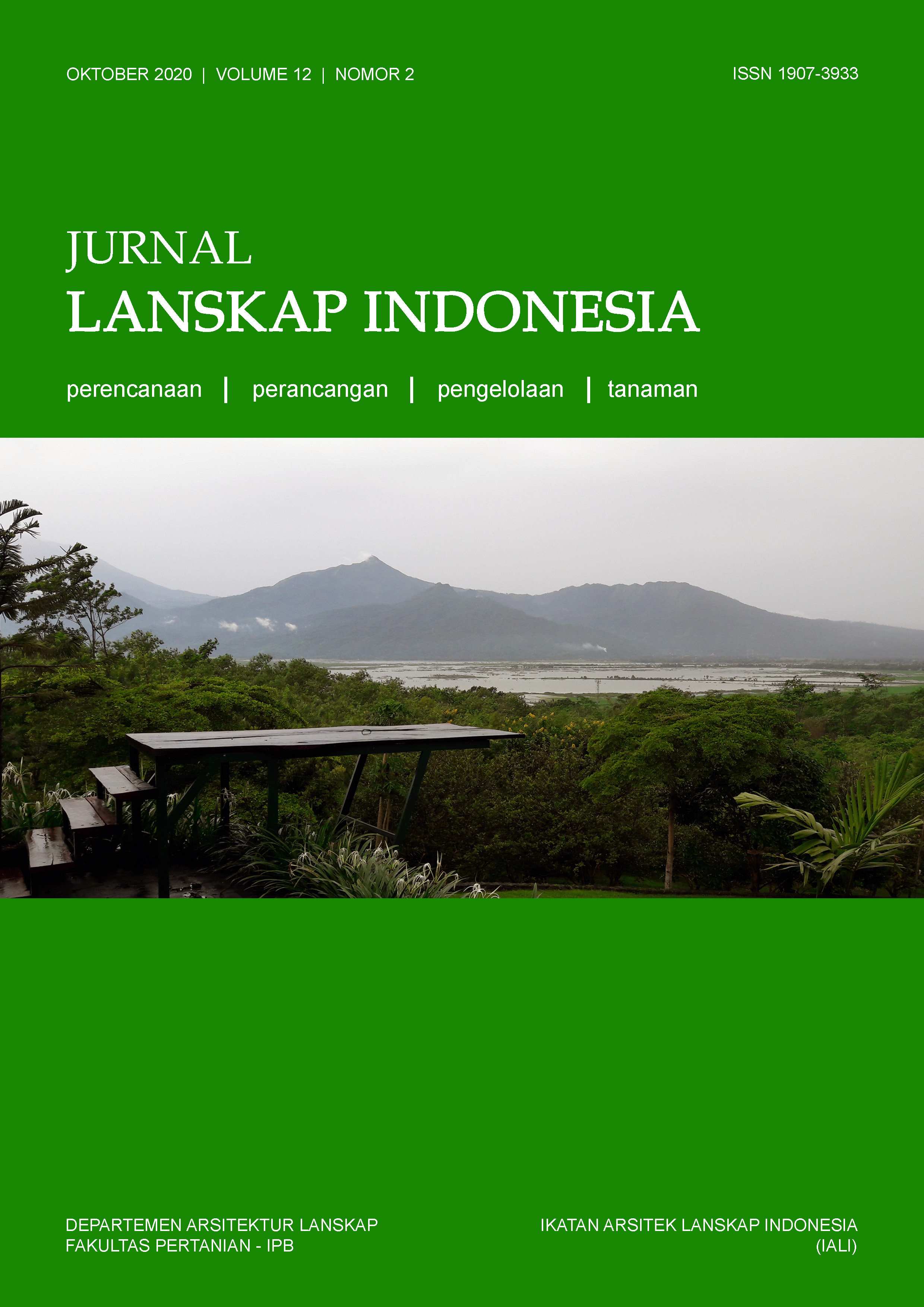Redesain Taman Kota Trunojoyo Kota Malang Melalui Pendekatan Lanskap Kota
Abstract
Malang City has a number of tourism potentials that can attract tourists. The location of Malang City is very strategic because it is in a highland and has a comfortable temperature. The existence of Malang City is very strategic because access to and tourist attractions in Malang City is very easy, one of which is via train. Malang City has various potential natural, man-made, and indigenous landscapes. Natural resources and unique culture of the community need to be maintained and preserved. One of them is the Trunojoyo City park which is located in front of the entrance or the entrance gate for tourists from the New Station of Malang City. For that, it is necessary to evaluate the characteristics of the city of Malang so that it can support a positive destination image regarding the city of Malang as a tourist destination. The problems in the research location, apart from the unorganized condition of the park, also the lack of a strong character as a city identity, the lack of public appreciation of the existence of city parks. The main function of several parks is not yet clear and is not yet supported by landscape elements that are able to accommodate the activities of its users. This study aims to redesign Trunojoyo City Park, Malang City, so that it can be developed as an ideal and sustainable New City Park. The resulting output is in the form of site plans, cutout drawings, and detailed drawings. While the method used to analyze is descriptive qualitative by referring to the Judge design process (2018). The results of this study indicate that the Trunojoyo city park is not suitable and does not meet the existing standards on the carrying capacity of the park so that a park design recommendation must be provided.
Downloads
This journal permits and encourages authors to post items submitted to the journal on personal websites or institutional repositories both prior to and after publication, while providing bibliographic details that credit, if applicable, its publication in this journal. However, after the article is submitted and published in this journal, it is fully copyrighted by the Jurnal Lanskap Indonesia or JLI. If excerpts from other copyrighted works are included, the author must obtain written permission from the copyright owner and give credit to the source in the article. Then, the writer or reader is allowed to copy, share, and redistribute articles/material in any form. But it must still include the appropriate source and credit because the article in this journal is licensed by Creative Commons Attribution 4.0 International License (CC BY 4.0).
I. Proposed Policy for Journals That Offer Open Access
Authors who publish with this journal agree to the following terms:
- Authors retain copyright and grant the journal right of first publication with the work simultaneously licensed under a Creative Commons Attribution License that allows others to share the work with an acknowledgement of the work's authorship and initial publication in this journal.
- Authors are able to enter into separate, additional contractual arrangements for the non-exclusive distribution of the journal's published version of the work (e.g., post it to an institutional repository or publish it in a book), with an acknowledgement of its initial publication in this journal.
- Authors are permitted and encouraged to post their work online (e.g., in institutional repositories or on their website) prior to and during the submission process, as it can lead to productive exchanges, as well as earlier and greater citation of published work (See The Effect of Open Access).
II. Proposed Policy for Journals That Offer Delayed Open Access
Authors who publish with this journal agree to the following terms:
- Authors retain copyright and grant the journal right of first publication, with the work after publication simultaneously licensed under a Creative Commons Attribution License that allows others to share the work with an acknowledgement of the work's authorship and initial publication in this journal.
- Authors are able to enter into separate, additional contractual arrangements for the non-exclusive distribution of the journal's published version of the work (e.g., post it to an institutional repository or publish it in a book), with an acknowledgement of its initial publication in this journal.
- Authors are permitted and encouraged to post their work online (e.g., in institutional repositories or on their website) prior to and during the submission process, as it can lead to productive exchanges, as well as earlier and greater citation of published work (See The Effect of Open Access).



























